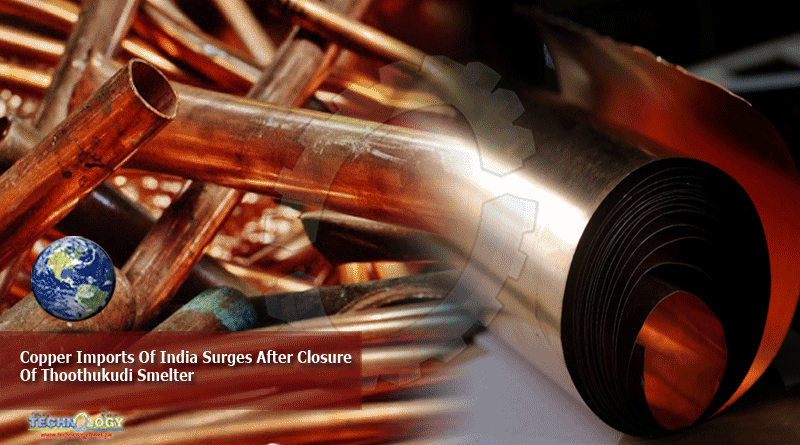As India Recovers From The Impact Of COVID-19 & Economic Growth Starts To Gather Momentum, The Demand For Copper Is Bound To See A Quantum Jump.

Unfortunately, despite the government’s thrust on Make in India, Atmanirbhar Bharat and adequate domestic capacity, we will end up sourcing half of our requirement through imports. Be it coal, oil and gas, bauxite, aluminium or now copper, India remains caught in the crosshair of imports despite sizeable domestic reserves and the technology to produce.
While pinning any one factor like taxation or role of FTAs would oversimplify the issue, the continued closure of Sterlite Copper plant in Thoothukudi can definitely be identified as one of the key factors that impacted the domestic production significantly. For the first time in 18 years, India became a net copper importer as its largest smelter-accounting for nearly 40% of India’s capacity-was shut down in May 2018 by Tamil Nadu government over allegations of damage to environment. During FY19, the demand for copper refined products was 7 lakh tonnes. Given the growth prospects for India, it is expected to increase to almost 15 lakh tonnes a year.
In the last 27 months, India’s copper industry has suffered a huge body blow, leading to loss of production and precious outflow of foreign exchange. From a peak output of 848,000 tonne in FY18, production fell sharply to 409,000 tonne in FY20. Similarly, exports fell from 421,000 tonne or $2.7 billion in FY18 to merely 31,000 tonne or $186 million in FY20. Imports, on the other hand, have risen sharply from 215,000 tonne or $1.4 billion in FY18 to 341,000 tonne or over $2 billion (`15,000 crore) in FY20.
While charges of environment pollution have formed the very basis of closure of Sterlite Copper operations, information from Tamil Nadu Pollution Control Board paints a different picture. The data from the pollution regulator clearly shows that, during the period 2017-2019, there has been no significant change in the level of SO2 and NOx in the ambient air in and around Thoothukudi. Importantly, when the plant was functional, the SO2 levels consistently remained under the GOOD category of the AQI. Further, for the period prior and post the plant closure, the SO2 levels have remained unchanged, i.e, between 0-40micro gram/cubic meter, which is well within permissible levels of National Ambient Air Quality Standards 2009. What is gaining currency is the argument that the other industries around the plant are the ones that are causing pollution beyond permissible levels.
The shutdown of the smelter has also led to a huge loss of employment in the region. While direct and indirect employees are estimated at 20,600, the closure also hit 400 downstream industries that employed close to 100,000 people. The shutdown means the government is losing a sizeable revenue in the form of taxes and duties. Annually, Sterlite Copper has been paying up to Rs 2,559 crore to the exchequer by way of taxes and other statutory contributions.
While there is no defence for any industry causing environmental harm, it is also equally disheartening that a full-fledged plant for a crucial metal has been shut down arbitrarily. One wonders whether slapping the heaviest of penalties and forcing a course correction instead of simply shutting a facility may be the preferred new normal. Pakistan and China seem to have benefited from the shutdown, with the former’s Saindak Copper-Gold Project seeing exports rise 400% in the last two years.
From retail to defence, everything is being reimagined in a way that demands a change in the very way we relate to the economy. Can it then be so difficult to rethink and reimagine domestic production and all that we need to change to support it? The question is as applicable to anything else as it is to copper-all things development, all things self-reliance and atmanirbhar.
This news was originally published at financialexpress.com
